Photo credit Buffalo Bills and Erie County By Max Faery, WBEN.com Newsroom
Orchard Park, N.Y. (WBEN) – There has been much discussion about what the new Bills stadium will look like and what technology will be implemented. WBEN learned late last week that the new Bills stadium will feature large mesh-like metal perforated screens along the exterior of the stadium which is aimed to create “wind confusion.”
When wind hits the exterior of the building, instead of re-directing and finding other avenues to flow at full speed, the wind will end up dissipating significantly as if hitting a screen.

New Bills stadium to feature mesh-like exterior
While some are calling it “wind confusion,” University at Buffalo’s Assistant Professor of Mechanical and Aerospace Engineering and wind energy expert John Hall would refer to it as “turbulent airflow.”
“Wind is a moving fluid, and it can be either laminar, or it can be turbulent and turbulent air flow is chaotic, it’s not straight, it’s not smooth. That’s what you’re gonna get whenever you have airflow around buildings, around ground structures and around trees, you’re gonna get this turbulent airflow,” said Hall.
“Now, towards the ground, what you have is the boundary layer. The boundary layer is where the airflow has this turbulence in it, where it’s not good and steady and as you move up higher, as you get away from ground, obstacles like hills and trees and buildings and so forth, you’re going to begin to get smoother airflow. Smoother airflow, that’s what’s desirable for producing wind energy. Wind turbines, they don’t like chaotic airflow or turbulent airflow, what they like is nice, smooth air flow. These systems are designed, as they need to be, to handle nice, smooth airflow,” Hall explains.
So, what do these metal perforated screens do?
“The screens, what those would do is basically take airflow that’s turbulent, and for it to pass through the screen, it basically straightens it out, and it converts it into a smoother, laminar – if you will – airflow, that would be more useful for producing wind energy,” Hall says.
The effectiveness of these screens will be dependent on the design of the structure Hall says. Renderings of the stadium have not been released to the public yet.
“It’s very dependent on the airflow. If you have a difference in 5-6 to 7-10 mile per hour wind flow, all those are going to change and the way that those structures respond to that, is going to be different based on the different speed of the wind,” said the professor.
Hall mentions that perforated screens are commonly seen in wind tunnels for researching objects in flight, but certainly the size of the screens used for flight research will compare to the size of the screens used at the stadium, especially if they are going to be putting screens all along the stadium. Hall says that he hasn’t seen any perforated screens in wind farms.
“You actually use screens within wind tunnels, so that you can straighten that air out. So think of it like a straightener, almost like you’re combing the air and so you’re gonna straighten the the wind out so that your test whatever experiment you’re doing so you have nice smooth airflow. I haven’t really seen anything done like that on a large scale because it would really take quite a quite an effort to come up a structure like that. It may work good for some wind speeds, but not necessarily for others.”
“In a perfect model of the stadium, could Hall see this as a viable way to straighten out the turbulent wind?
“I think that they can be effective, you know, if it’s done the right way. Certainly, yes. I think that there would be benefit to that,” said Hall, “If you’re trying to control the airflow through the stadium, I would think that the screens would have to be pretty large.”
